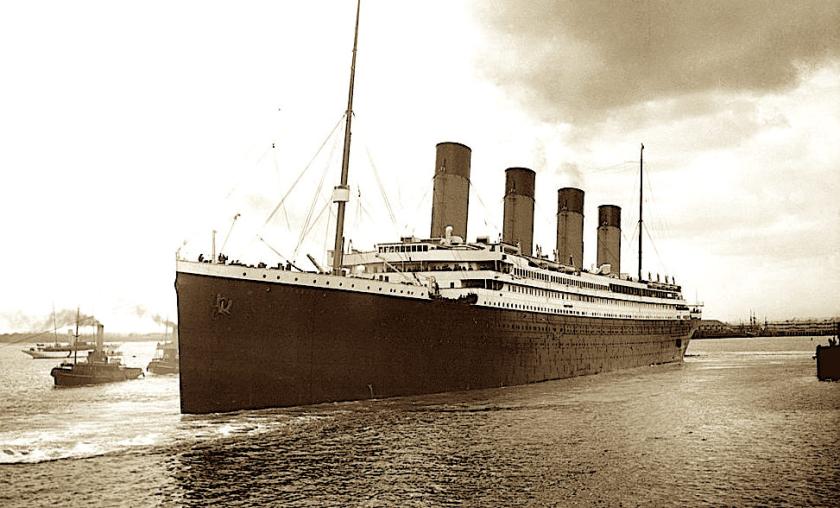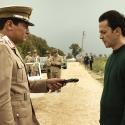The appalling fate of the allegedly unsinkable liner Titanic in 1912 has fuelled endless feature films and documentaries, not to mention a dismal drama series by Julian Fellowes (there was also a proposed Titanic II vessel which would have been built in China, but which remains mysteriously un-launched). However, it’s difficult to see why this film has appeared 107 and a half years after she sank.
Part of an intermittent series called Great British Ships, it was presented by Rob Bell (pictured below), who ends every sentence with at least three imaginary exclamation marks. I lost count of how many times he told us that Titanic was biggest ship ever built, and he went into arm-waving ecstasy when standing in the empty Belfast dry dock where Titanic was built. In fact some of the more interesting stuff was about the SS Nomadic, a mini-me built alongside Titanic and used to ferry passengers out to her monstrously-sized sibling.
Titanic was the double-decker Airbus of the era, needing the creation of larger docks and deeper channels in order to be able to berth successfully at her destinations. Since she was 882 feet long and weighed 24,000 tons even before adding boilers, engines etc, even launching Titanic was a major headache, eased (we learned) by the traditional trick of adding tons of rendered beef fat and soap to the slipway to encourage the leviathan to slither into the water.
 But this wasn’t just about how they built the Titanic, but also how bad luck and bad judgement sank her. The passengers shared Rob’s fanboy-ish infatuation with Titanic, so that the notion of her suddenly sinking seemed so laughably absurd that it hypnotised them into inertia on the fateful night, leaving them unable to react in time to the emergency. As for the luckless steerage passengers in the bowels of the ship – where accommodations were not, after all, cramped and squalid, but actually quite commodious – they were hampered by the labyrinth of stairways and corridors that lay between them and the lifeboats on the upper decks.
But this wasn’t just about how they built the Titanic, but also how bad luck and bad judgement sank her. The passengers shared Rob’s fanboy-ish infatuation with Titanic, so that the notion of her suddenly sinking seemed so laughably absurd that it hypnotised them into inertia on the fateful night, leaving them unable to react in time to the emergency. As for the luckless steerage passengers in the bowels of the ship – where accommodations were not, after all, cramped and squalid, but actually quite commodious – they were hampered by the labyrinth of stairways and corridors that lay between them and the lifeboats on the upper decks.
Titanic was crammed with the finest technology then available, from her Marconi radio transmitter to a military-grade turbine engine, and the anti-flooding compartmentalised structure greatly exceeded existing safety regulations. Unfortunately the rules hadn’t been penned with a Titanic-sized catastrophe in mind. As a maritime historian pointed out, crashing the world’s biggest ship into a 20,000 ton iceberg at 21 knots was asking for trouble. If only Captain Smith had slowed down when they reached the ice-field. Or imagine if he’d had Google Maps.















Add comment